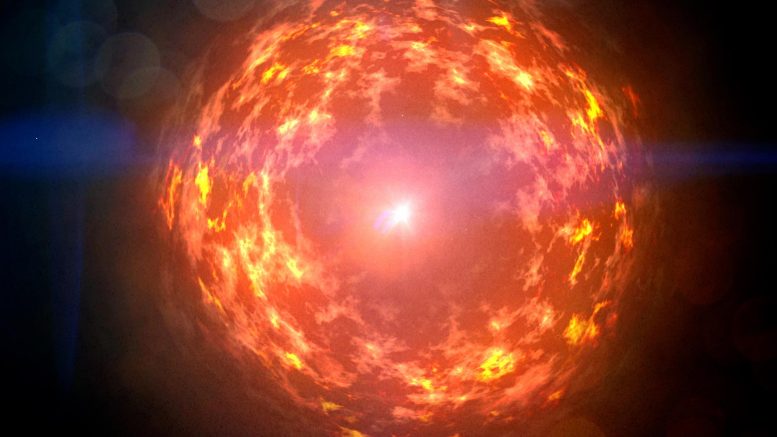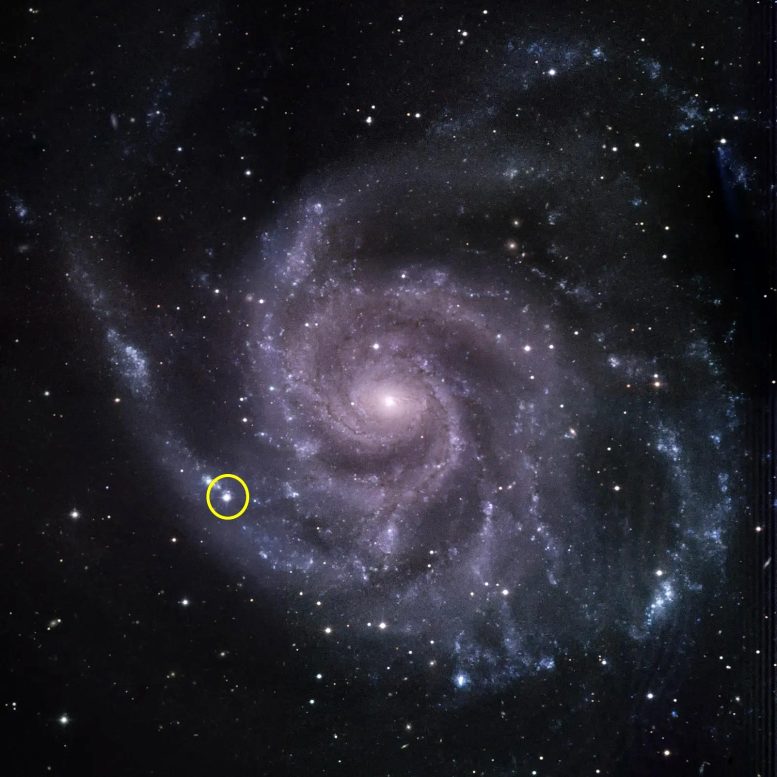Defying Expectations: NASA’s Fermi Sees No Gamma Rays From Nearby Supernova
[ad_1]

The 2023 observation of supernova SN 2023ixf in the Pinwheel galaxy provided a unique chance to study cosmic ray production, but the expected gamma rays were not detected by NASA’s Fermi Telescope, indicating much lower energy conversion rates than anticipated. Credit: NASA
Observations of SN 2023ixf in 2023 led to surprising findings regarding cosmic ray production by supernovae, with potential implications for understanding cosmic ray origins and acceleration mechanisms.
In 2023, a nearby supernova offered astrophysicists an excellent opportunity to test ideas about how these types of explosions boost particles, called cosmic rays, to near light-speed. But surprisingly, NASA’s Fermi Gamma-ray Space Telescope detected none of the high-energy gamma-ray light those particles should produce.
On May 18, 2023, a supernova erupted in the nearby Pinwheel galaxy (Messier 101), located about 22 million light-years away in the constellation Ursa Major. The event, named SN 2023ixf, is the most luminous nearby supernova discovered since Fermi launched in 2008.
Unanticipated Results From Fermi Telescope
“Astrophysicists previously estimated that supernovae convert about 10% of their total energy into cosmic ray acceleration,” said Guillem Martí-Devesa, a researcher at the University of Trieste in Italy. “But we have never observed this process directly. With the new observations of SN 2023ixf, our calculations result in an energy conversion as low as 1% within a few days after the explosion. This doesn’t rule out supernovae as cosmic ray factories, but it does mean we have more to learn about their production.”
The paper, led by Martí-Devesa while at the University of Innsbruck in Austria, will appear in a future edition of Astronomy and Astrophysics.
Even when it doesn’t detect gamma rays, NASA’s Goddard Space Flight Center in Greenbelt, Maryland. “Cosmic rays produce gamma rays when they interact with matter in their environment. Fermi is the most sensitive gamma-ray telescope in orbit, so when it doesn’t detect an expected signal, scientists must explain the absence. Solving that mystery will build a more accurate picture of cosmic ray origins.”

The Fred Lawrence Whipple Observatory’s 48-inch telescope captured this visible-light image of the Pinwheel galaxy (Messier 101) in June 2023. The location of supernova 2023ixf is circled. The observatory, located on Mount Hopkins in Arizona, is operated by the Center for Astrophysics | Harvard & Smithsonian. Credit: Hiramatsu et al. 2023/Sebastian Gomez (STScI)
Supernovae As Cosmic Ray Accelerators
Astrophysicists have long suspected supernovae of being top cosmic ray contributors.
These explosions occur when a star at least eight times the Sun’s mass runs out of fuel. The core collapses and then rebounds, propelling a shock wave outward through the star. The shock wave accelerates particles, creating cosmic rays. When cosmic rays collide with other matter and light surrounding the star, they generate gamma rays.
Supernovae greatly impact a galaxy’s interstellar environment. Their blast waves and expanding cloud of debris may persist for more than 50,000 years. In 2013, Fermi measurements showed that supernova remnants in our own
[ad_2]
Read More:Defying Expectations: NASA’s Fermi Sees No Gamma Rays From Nearby Supernova

Comments are closed.